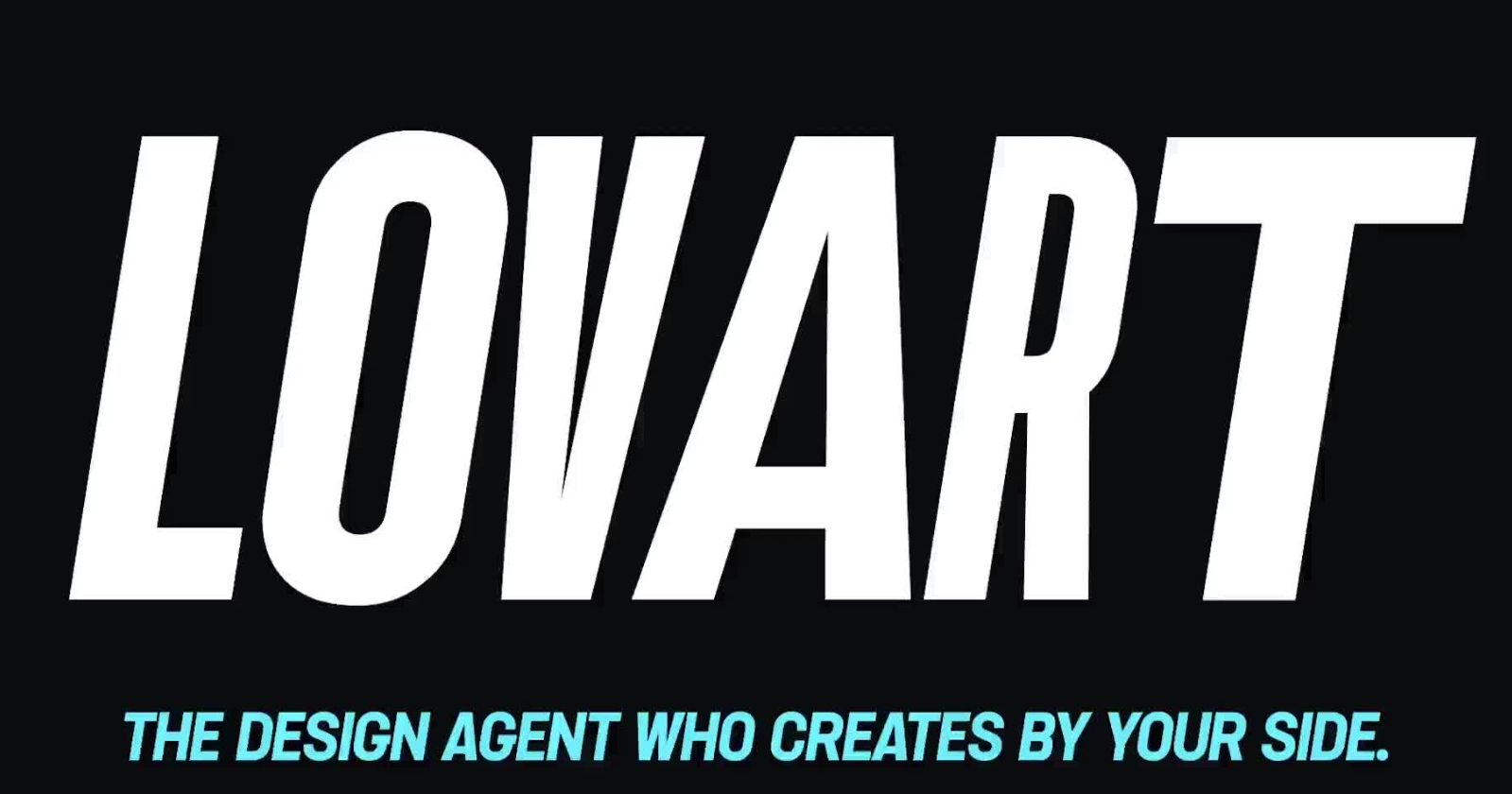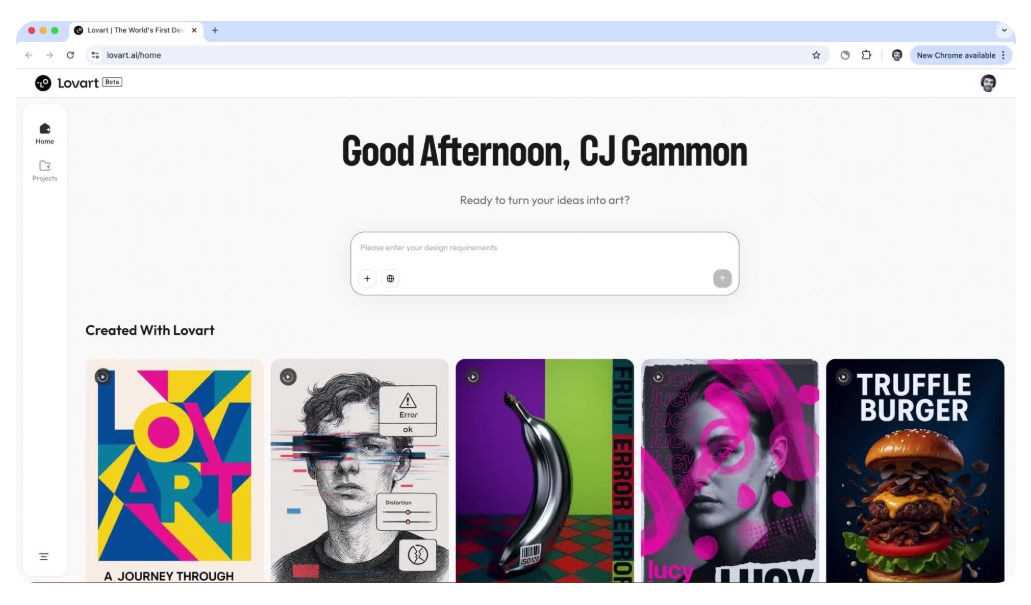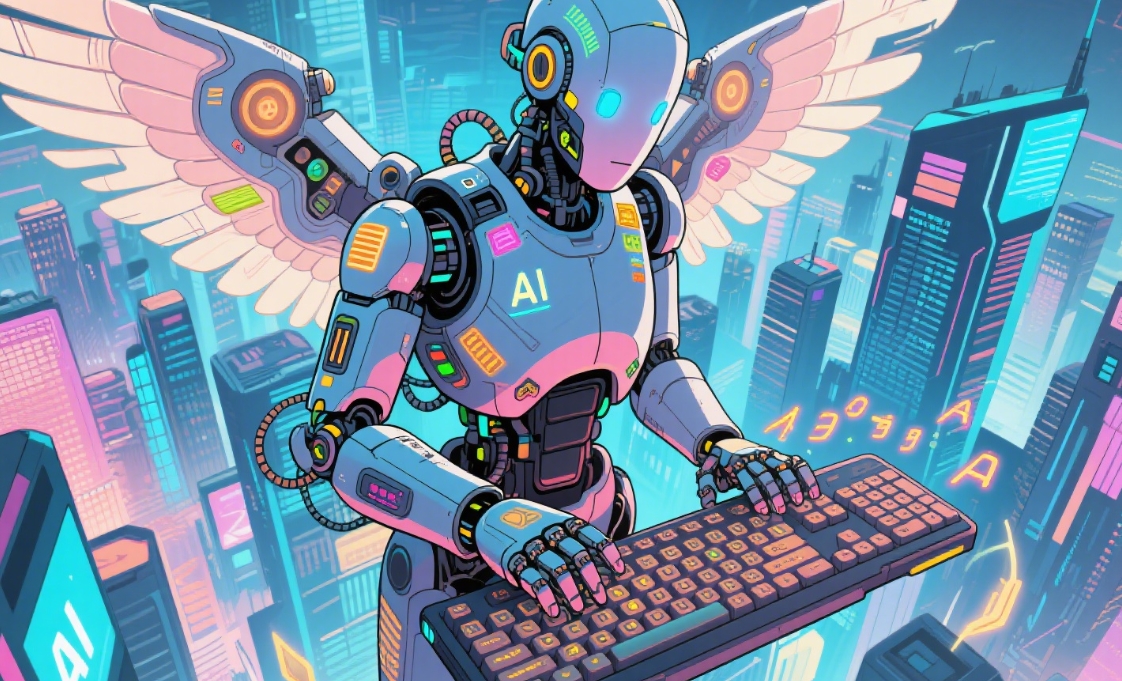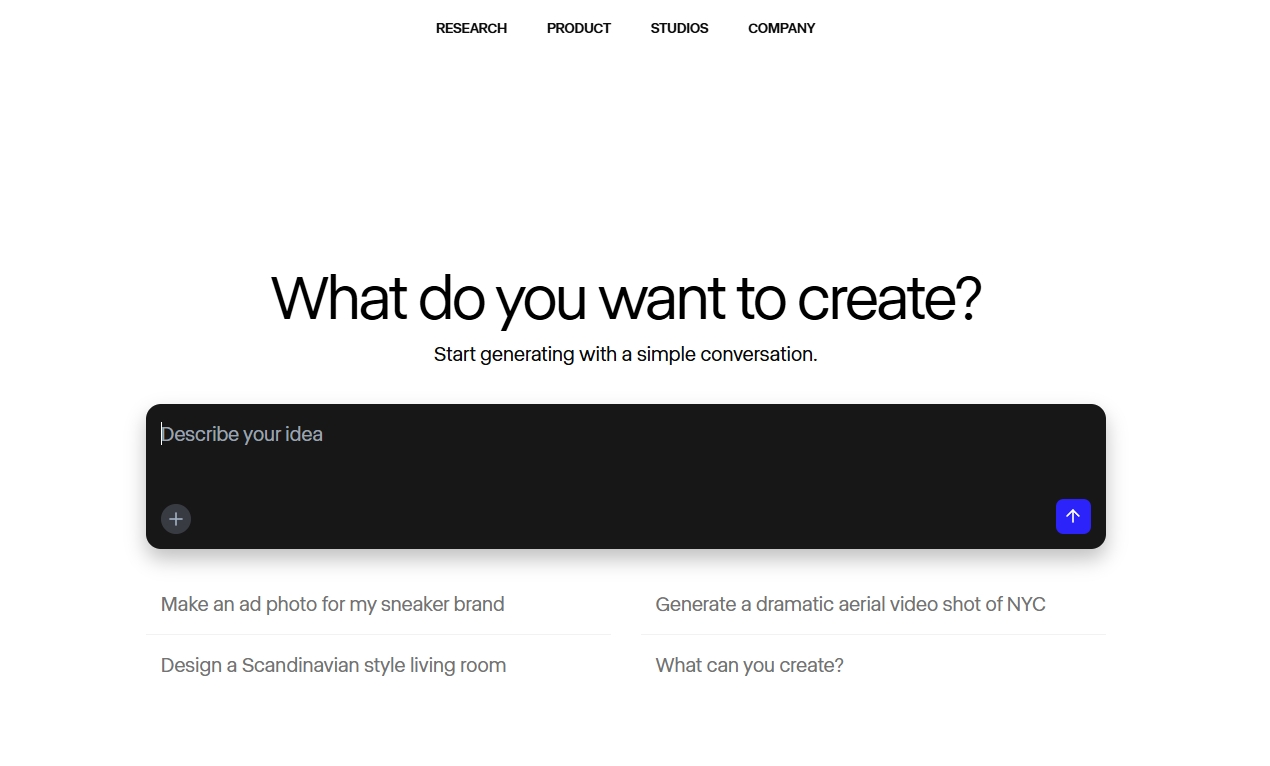Pourquoi Lovart est-il le premier agent de design au monde ? Musk s'emballe pour les likes
分类:Nouvelles de l'IA 浏览量:669
Si vous avez suivi les développements récents dans le domaine des applications de l'IA, il est presque impossible de ne pas avoir entendu parler de Lovart (connu sous le nom de "Xingliu AI" en Chine).

Ses débuts ont été tout simplement stupéfiants
Après son lancement, le produit a rapidement fait sensation dans la communauté technologique mondiale :
- La vidéo officielle a recueilli près d'un million de vues
- Étincelles près de 5 000 discussions sur Twitter
- Même les personnes qui ont la réputation d'être perspicaces Elon Musk n'a pas pu s'empêcher de lui donner un coup de pouce
Dans un délai de 24 heures seulement, plus de 20 000 utilisateurs enthousiastes ont affluétous en lice pour obtenir un précieux code d'invitation à la bêta.
Avons-nous vraiment besoin d'un autre outil de conception ?
Vous vous demandez peut-être si les outils de l'AIGC ne sont pas déjà omniprésents ? A partir de Voyage à mi-parcours à Diffusion stableà divers complexes ComfyUI de travail, avons-nous vraiment besoin d'un autre outil de conception ?
La réponse est oui - mais ce dont nous avons besoin n'est pas un simple "outil" de plusmais un une "relation de production" entièrement nouvelle.
L'ascension de Lovart : Une feuille de route précieuse pour les entrepreneurs de l'IA
Dans le contexte actuel du boom des outils de l'AIGC et de ce qui semble être un marché en pleine effervescence, L'ascension de Lovart offre à tous les entrepreneurs de l'IA une "feuille de route" extrêmement précieuse. Elle répond à plusieurs questions essentielles :
- Comment les startups peuvent-elles se tailler une place dans un marché dominé par les géants ?
- Lorsque les technologies convergent, quel est le véritable obstacle à la concurrence ?
- Lorsque les utilisateurs se lasseront des "jouets de l'IA", quel type de produit les incitera vraiment à payer ?
Après une expérience et des recherches approfondies sur les versions nationales et internationales de Lovart, Chaos AI est arrivé à une conclusion :
Ce que fait Lovart n'est peut-être pas seulement un produit, mais la définition de l'image de marque de l'entreprise. "forme finale" du travail créatif à l'ère de l'IA.
Des "outils" aux "équipes de créateurs"
Il l'a bien compris :
"L'essence du SaaS est que les services sont fournis par des personnes, et que les personnes utilisent des outils. Aujourd'hui, l'IA est devenue le principal fournisseur de services. La valeur commerciale est énorme, car elle permet d'améliorer, voire de remplacer, la productivité de certaines professions et de restructurer les relations de production.
C'est l'idée centrale de LovartL'IA peut être améliorée en passant d'un système à l'autre. "outil" à un "équipe créative (équipe de créateurs)".
Dans ce nouveau modèle :
- Vous n'êtes plus l'opérateur qui transpire
- Vous devenez le client qui définit les exigences
- Lovart est le fournisseur de services qui comprend vos idées et mobilise ses concepteurs, réalisateurs, photographes (agents de l'IA) pour vous livrer le travail final
Le présent saut cognitif de l'"addition d'outils" à la "multiplication dimensionnelle" est la pierre angulaire du succès de Lovart.

Un nouveau modèle de valeur : le "studio créatif unipersonnel"
Lovart introduit une nouvelle dimension de la "agentization" des servicesqui se multiplie avec les "Création multimodale dimension pour construire un un modèle de valeur sans précédent:
"Un studio de création pour une seule personne.
La métaphore de la "table" : Comment Lovart redéfinit l'interaction
Comment fonctionne donc cette collaboration sans faille entre le "client" et le "prestataire de services" ?
Chen Mian a proposé une métaphore très perspicace - la "table".
"Si les humains reviennent aux pinceaux, à l'encre, au papier et aux pierres à encre, la toile est la table. Maintenant, lorsque deux personnes conçoivent un projet, le client se tient à côté de vous et vous dit ce que vous devez faire. Vous placez l'œuvre sur la table, et ils pointent et font des gestes vers la table... C'est la forme la plus primitive d'interaction ou d'interface".
Lovart recrée ce scénario original
Lorsque vous ouvrez StarFlow AI:
- Vous verrez un une "toile" infiniment grande (la table) à gauche
- Et un boîte de dialogue (la bouche du client) à droite
Vous pouvez le dire en chinois simple :
"Aidez-moi à concevoir une série d'affiches de recrutement pour l'Institut d'innovation en IA de Chaos, cinq au total, chacune avec un style différent.
En quelques minutes, cinq affiches professionnelles apparaissent.
Si vous n'êtes pas satisfait, dites-le :
"Remplacez l'homme de cette image par une femme.
Ou encore : "Changez le style pour qu'il ressemble à celui de Van Gogh".
Le présent "toile + boîte de dialogue" révolutionne l'expérience des utilisateurs de l'AIGC.
La croyance sous-jacente
L'équipe de Lovart a toujours respecté :
L'IA dans différents domaines verticaux nécessite des interfaces d'interaction différentes.
Pour la conception, un espace visuel partagé est essentielle.
[Trouver un positionnement] Concurrence déséquilibrée, croissance sauvage
Après avoir construit un nouveau modèle cognitif, la question suivante se pose :
Où cette nouvelle espèce doit-elle s'implanter ?
Chen Mian est convaincu :
"Le choix de la bonne voie est bien plus important que la technologie elle-même.
Les entreprises en phase de démarrage devraient y réfléchir sérieusement :
- Quelle est la chaîne de valeur le plus long
- Le plus douloureux
- La plus grande dépendance à l'égard de la collaboration humaine
- Peut être intégration complète de bout en bout par des agents d'intelligence artificielle
Éviter les géants, adopter les verticales
Chen Mian et son équipe ont choisi une voie tout à fait différente de la voie traditionnelle. verticale, ciblée et enracinée dans le domaine de la création.
Alors qu'Adobe et Midjourney dominent le marché au sens large, Lovart se concentre sur.. :
- Créateurs indépendants
- Segments des consommateurs professionnels (Prosumer)
"De nombreuses startups échouent en concurrençant directement les géants de l'industrie.... L'opportunité réside dans la combinaison de la connaissance du domaine avec l'IA pour créer des expériences utilisateur uniques."
Redéfinir les créateurs comme des réalisateurs
Lovart n'a pas pour objectif de construire de meilleurs outils.
Il vise à redéfinir la création, transformant les utilisateurs de Opérateurs en "directeurs" qui bénéficient directement des résultats créatifs.
Un pari audacieux sur la courbe en S
Le succès de Lovart est dû à la précision de son évaluation des tendances.
- Voyage à mi-parcours (1.0) l'époque est mûre
- ComfyUI (2.0) a une barrière à l'entrée élevée
- Agent (3.0) L'ère ne fait que commencer
Bien que la technologie des agents soit immature, Chen Mian croire :
"Lorsque l'agent arrivera à maturité, il ne sera plus une opportunité pour les entrepreneurs de la couche applicative. Misez tôt, pendant que le modèle est immature".
Lovart a agi de manière décisive, transformant les visions d'avenir en réalité grâce à itération rapide et une exécution précise.
Des outils aux équipes : Les relations de production redéfinies
Ce que Lovart apporte, ce n'est pas seulement une révolution technologique, mais une transformation de la société. "Les personnes et les outils les relations.
Chen Mian résume la situation :
"L'IA passe du remplacement d'outils individuels au remplacement de professions et, à terme, peut remplacer des équipes avec des capacités de collaboration. C'est l'aspect le plus radical.
Le L'ère des agents La restructuration des relations de production - l'ouverture du pouvoir créatif de haut niveau à l'ensemble de la société - est un élément essentiel de la stratégie de l'Union européenne. tout le mondeL'Union européenne a également mis en place un programme de formation à l'intention de ses membres, en supprimant les obstacles aux prix.
L'histoire de l'ascension de Lovart
Le succès rapide de Lovart n'est pas le fruit du hasard.
C'est le résultat de :
- Chen Mian's une dizaine d'années d'expérience dans le domaine de l'internet
- Profondeur compréhension de la logique d'entreprise
- Compréhension claire des besoins des utilisateurs et tendances technologiques
Il a fait l'expérience de la Guerre des subventions entre Didi et Uber, le course de la capitale à vélo partagéet des périodes de la pénurie de ressources.
Mais au lieu d'abandonner, il a vu L'IA comme rédemption:
"La vague d'IA est une forme de rédemption pour moi. Elle a donné un sens à toutes les expériences fragmentées que j'ai vécues au cours de la dernière décennie."
Les conseils de Chen Mian aux entrepreneurs de l'IA
- Leadership cognitif est plus importante que la technologie.
- Différenciation provient de la valeur, et pas seulement des lacunes du marché.
- Exécution extrême et passion sont essentiels.
"La chose la plus heureuse est lorsque l'avenir que vous avez imaginé devient réellement une réalité entre vos mains.
L'avenir est là, mais il n'est pas uniformément réparti
Lovart et Xingliu AI ont fait un premier pas audacieux.
Le l'avenir est déjà là - il n'est tout simplement pas devenu encore grand public.
Êtes-vous prêt à créer votre propre "équipe d'IA" ?




